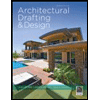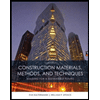
EP WEBASSIGN FOR MOAVENI'S ENGINEERING
6th Edition
ISBN: 9780357126592
Author: MOAVENI
Publisher: CENGAGE CO
expand_more
expand_more
format_list_bulleted
Question
Chapter 14.5, Problem 2BYG
To determine
Explain about “subroutine”.
Expert Solution & Answer
Want to see the full answer?
Check out a sample textbook solution
Students have asked these similar questions
YOUR TOP STADIA CROSSHAIR IN YOUR LEVEL YEILDS A
Roo READING of 7.32 FT.
YOUR BOTTOM STADIA CROSSHAIR READS 6.23 FT.
How FAR AWAY FROM YOUR INSTRUMENT (LEVEL) IS
YOUR STATION WHERE YOUR PHilly Roo IS LOCATED:
Determin the internal angle given the following:
Convert the following
Chapter 14 Solutions
EP WEBASSIGN FOR MOAVENI'S ENGINEERING
Ch. 14.2 - Prob. 1BYGCh. 14.2 - Prob. 2BYGCh. 14.2 - Prob. 3BYGCh. 14.2 - Prob. 4BYGCh. 14.2 - Prob. 5BYGCh. 14.2 - Prob. BYGVCh. 14.4 - Prob. 1BYGCh. 14.4 - Prob. 2BYGCh. 14.4 - Prob. 3BYGCh. 14.4 - Prob. 4BYG
Ch. 14.4 - Prob. 5BYGCh. 14.4 - Prob. BYGVCh. 14.5 - Prob. 1BYGCh. 14.5 - Prob. 2BYGCh. 14.5 - Prob. 3BYGCh. 14.5 - Prob. 4BYGCh. 14.5 - Prob. BYGVCh. 14 - Prob. 1PCh. 14 - Prob. 2PCh. 14 - Prob. 3PCh. 14 - Prob. 4PCh. 14 - Prob. 5PCh. 14 - Prob. 6PCh. 14 - Prob. 7PCh. 14 - Using Excel, create a table that shows the...Ch. 14 - Using Excel, create a table that shows the...Ch. 14 - Prob. 10PCh. 14 - Prob. 11PCh. 14 - Prob. 12PCh. 14 - Prob. 13PCh. 14 - Prob. 14PCh. 14 - Prob. 15PCh. 14 - Prob. 16PCh. 14 - Prob. 17PCh. 14 - Prob. 18PCh. 14 - Prob. 19PCh. 14 - Prob. 20PCh. 14 - Prob. 21PCh. 14 - Prob. 22PCh. 14 - Prob. 23PCh. 14 - Prob. 24PCh. 14 - Prob. 25PCh. 14 - Prob. 26PCh. 14 - Prob. 27PCh. 14 - Prob. 28PCh. 14 - Prob. 29PCh. 14 - Prob. 30PCh. 14 - Prob. 31PCh. 14 - Prob. 32PCh. 14 - Prob. 33PCh. 14 - Prob. 34PCh. 14 - Prob. 35P
Knowledge Booster
Similar questions
- Slope Deflection for the fixed supported beam with a spring, k=2EI.arrow_forwardSITUATION. A uniform live load of 16 kN/m and a single concentrated live force of 34 kN are placed on the top beams. If the beams also support a uniform dead load of 3 kN/m, determinearrow_forwardComplete the profile leveling notes in Table 1. Show the arithmetic check and sample calculations of your work. Draw a neat sideview sketch showing the location of all stations and indicate on the sketch all of the numbers in your completed table.arrow_forward
- 3. A level loop was run starting at BM 20 and going clockwise around the loop shown below in Figure 2. The given known elevation of BM 20 is 1418.013 ft. When closing the level loop, BM 20 was found to have an elevation of 1417.890 ft. (a) Adjust the elevation of each station to correct for error. Show sample calculations of your work. (b) What is the accuracy ratio of the survey? BM 20 Elev. 1418.013 2.3 mi BM 20A Observed Elev. 1234.567 2.7 mi 1.6 mil 0.9 mi BM 20B Observed Elev. 1357.913 BM 20C Observed Elev. 1396.963arrow_forwardA W14 x 82 with 20 ft length column is part of a braced frame. The load and moments computed from service loads, and bending is about the x axis are (axial compressive dead load of 63 k; axial compressive live load of 76 k; upper dead moment of 32 ft-k; upper live moment of 56 ft-k; lower dead moment of 65 ft-k; lower live moment of 95 ft-k; the moments cause the member to bend in double curvature). Determine the lateral-torsional buckling modification factor C₁. ial live load ofarrow_forwardPROBLEM 1 Find the reaction at A and F. Compute for the force in members AB, BD, and DF. Use Method of Joints OR Method of Sections OR both. 3m B D C E 3m 100KN 3m 4marrow_forward
- I need detailed help solving this exercise from homework of Engineering Mathematics II.I do not really understand how to do, please do it step by step, not that long but clear. Thank you!P.S.: Please do not use AI, thanks!arrow_forwardI need detailed help solving this exercise from homework of Engineering Mathematics II.I do not really understand how to do, please do it step by step, not that long but clear. Thank you!P.S.: Please do not use AI, thanks!arrow_forwardI need detailed help solving this exercise from homework of Engineering Mathematics II.I do not really understand how to do, please do it step by step, not that long but clear. Thank you!P.S.: Please do not use AI, thanks!arrow_forward
- I need detailed help solving this exercise from homework of Engineering Mathematics II.I do not really understand how to do, please do it step by step, not that long but clear. Thank you!P.S.: Please do not use AI, thanks!arrow_forwardI need detailed help solving this exercise from homework of Engineering Mathematics II.I do not really understand how to do, please do it step by step, not that long but clear. Thank you!P.S.: Please do not use AI, thanks!arrow_forwardI need detailed help solving this exercise from homework of Engineering Mathematics II.I do not really understand how to do, please do it step by step, not that long but clear. Thank you!P.S.: Please do not use AI, thanks!arrow_forward
arrow_back_ios
SEE MORE QUESTIONS
arrow_forward_ios
Recommended textbooks for you
 Architectural Drafting and Design (MindTap Course...Civil EngineeringISBN:9781285165738Author:Alan Jefferis, David A. Madsen, David P. MadsenPublisher:Cengage Learning
Architectural Drafting and Design (MindTap Course...Civil EngineeringISBN:9781285165738Author:Alan Jefferis, David A. Madsen, David P. MadsenPublisher:Cengage Learning Engineering Fundamentals: An Introduction to Engi...Civil EngineeringISBN:9781305084766Author:Saeed MoaveniPublisher:Cengage Learning
Engineering Fundamentals: An Introduction to Engi...Civil EngineeringISBN:9781305084766Author:Saeed MoaveniPublisher:Cengage Learning Construction Materials, Methods and Techniques (M...Civil EngineeringISBN:9781305086272Author:William P. Spence, Eva KultermannPublisher:Cengage Learning
Construction Materials, Methods and Techniques (M...Civil EngineeringISBN:9781305086272Author:William P. Spence, Eva KultermannPublisher:Cengage Learning

Architectural Drafting and Design (MindTap Course...
Civil Engineering
ISBN:9781285165738
Author:Alan Jefferis, David A. Madsen, David P. Madsen
Publisher:Cengage Learning

Engineering Fundamentals: An Introduction to Engi...
Civil Engineering
ISBN:9781305084766
Author:Saeed Moaveni
Publisher:Cengage Learning

Construction Materials, Methods and Techniques (M...
Civil Engineering
ISBN:9781305086272
Author:William P. Spence, Eva Kultermann
Publisher:Cengage Learning